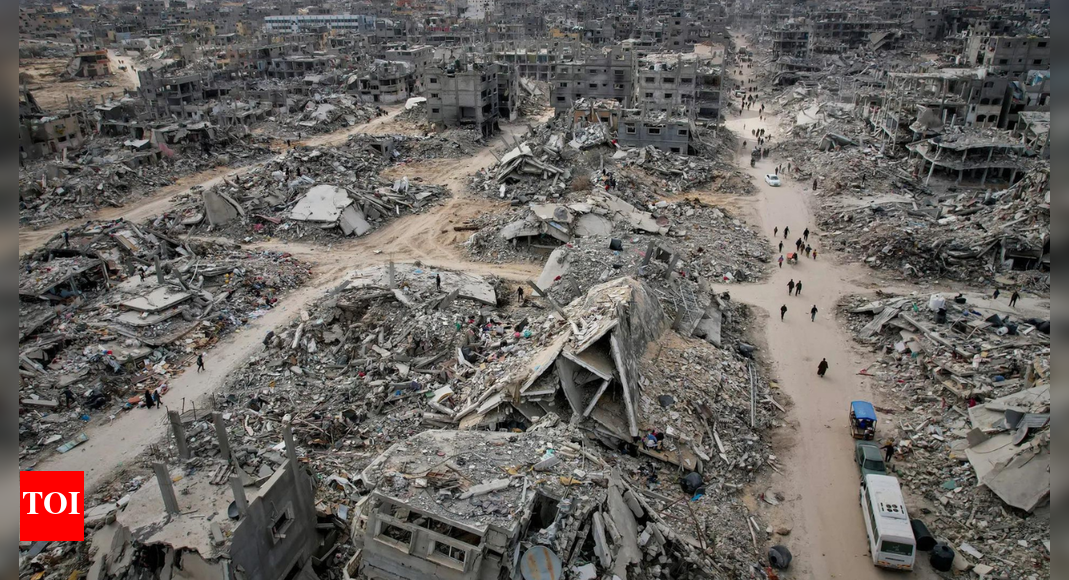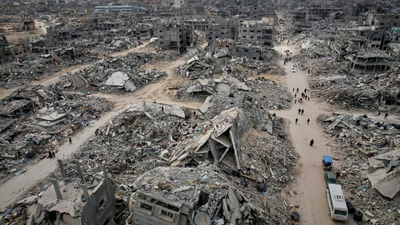
Two years have passed since Israel responded to the deadly Hamas attacks on October 7, 2023, by launching a military campaign in Gaza that left 251 people taken hostage.In the days that followed, Israel imposed a siege on the territory, cutting off electricity, food, and fuel, and ordered nearly half of Gaza’s 2 million residents in the north to evacuate their homes.Throughout the conflict, Israel has tightly regulated the flow of supplies into Gaza, imposing a full blockade from March to May 2025 over concerns that Hamas was redirecting aid to support its military activities. While some restrictions were later relaxed following international criticism, parts of Gaza were declared to be experiencing famine by August.The UN reported last year that the war’s impact has set back development in Gaza by the equivalent of 69 years.Israel’s offensive in Gaza has sparked accusations of genocide, which the country has consistently denied. In September, independent UN human rights experts stated that the scale of deaths and destruction in Gaza met the criteria for genocide, a claim Israel also rejected, as cited by the Guardian.
What is the human cost ?
Israeli attacks in Gaza have killed over 67,000 Palestinians, most of them civilians, including at least 20,000 children, around 2 percent of the territory’s child population. More than 168,000 people have been wounded, with many sustaining severe injuries typically seen in intense combat. Beyond the violence, many Palestinians have died from hunger, lack of shelter and medicine, accidents, infectious disease outbreaks, and the collapse of the healthcare system. According to a study in The Lancet, life expectancy in Gaza may have dropped by up to half in the first year of the conflict.Israel reports that 466 soldiers have been killed and 2,951 wounded. In addition, around 1,200 people, including more than 700 civilians, have died, and 251 were taken hostage in Gaza.
Food crisis and aid shortages
The UN reports approximately 400 deaths from malnutrition, including 101 children, mostly in recent months, with tens of thousands of children now relying on emergency feeding programs.In August, UN-backed experts declared famine in parts of Gaza, and aid workers noted in October that most pregnant women were surviving on just one meal a day.A global hunger monitor reported in August that famine had taken hold in Gaza City and was likely to spread, a claim Israeli prime minister Benjamin Netanyahu dismissed as an “outright lie,” as cited by Reuters. Since famine was confirmed in parts of Gaza, the Gaza Ministry of Health says at least 177 people, including 36 children, have died from starvation and malnutrition.
Devastation and mass displacement
Over 80 percent of Gaza is currently under Israeli military evacuation orders, designated as combat zones, or otherwise inaccessible to Palestinians. The recent Israeli offensive into Gaza City, where many displaced residents sought shelter, forced hundreds of thousands to flee, as reported by The Guardian.In total, aid agencies estimate that around 2.1 million people, 95 percent of Gaza’s population, have been displaced. “This is a traumatic, violent process, often repeated again and again. There are people who have lost absolutely everything,” said James Elder of UNICEF last week.Around 1 million people in Gaza lack access to six liters of drinking water per day, while 500,000 survive on less than nine liters, just over a tenth of pre-war levels. Meanwhile, historic sites, including medieval mosques, Ottoman-era markets, and churches, have been heavily damaged or destroyed.







